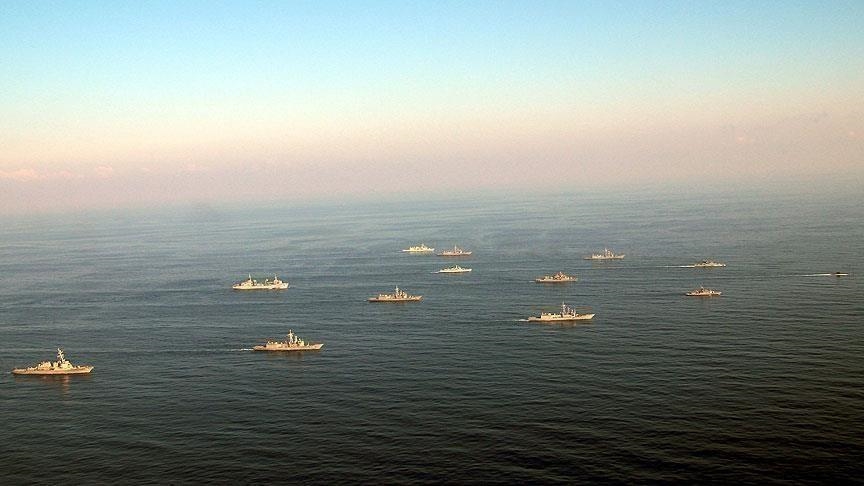ISTANBUL
The US and Philippines have discussed plans to hold combined maritime activities with “likeminded” partners in the disputed South China Sea, said a joint statement on Wednesday.
The two sides “discussed plans to conduct multilateral maritime activities with other like-minded partners in the South China Sea later this year,” read a joint statement issued at the end of the 2+2 ministerial meeting between the top diplomats and defense chiefs of the US and Philippines.
It added that the two sides committed to finalizing plans for “the resumption of combined maritime activities, including the conduct of joint sails by the US and Philippine navies, in the South China Sea.”
The meeting was held on Tuesday in Washington and was attended by US Secretary of State Antony Blinken, Filipino Foreign Affairs Secretary Enrique Manalo, US Secretary of Defense Lloyd Austin and his Filipino counterpart Carlito Galvez Jr.
“Now the commitments that we made today will further integrate our strong bilateral ties into multilateral networks, including with Japan and Australia,” Austin later told a joint news conference.
“We discussed plans to conduct combined maritime activities with likeminded partners in the South China Sea later this year as we work to enhance our collective deterrence,” he added.
Manila is the oldest ally of Washington in the region and is also the largest recipient of US military assistance, equipment, and training.
The 2+2 ministerial meeting was held as the two allies launched their biggest annual military exercises involving over 17,000 troops.
Besides, 111 Australian defense forces and observers from other countries are attending the “Balikatan” or “shoulder-to-shoulder” exercises in Philippines, set to end on April 28.
On Balikatan, China had said Monday that the “exchange and cooperation between relevant countries should not target any third party and should be conducive to regional peace and stability,” adding: “The US-Philippines military cooperation must not interfere in South China Sea disputes, still less harm China’s territorial sovereignty, maritime rights, and interests and security interests.”
– Treaty applies to armed attacks on either side
“For more than seven decades, the US and Philippine forces have trained and fought alongside each other. And today we’re building on those bonds to bring greater security, stability, and prosperity to the Indo-Pacific for the next 70 years and beyond,” the US defense chief said.
He said the two sides “reaffirmed” that a 1951 Mutual Defense Treaty between them “remained the bedrock of our cooperation.”
“As Secretary Blinken and I have said clearly and repeatedly, the Mutual Defense Treaty applies to armed attacks on either of our armed forces, our aircraft, or public vessels — including our Coast Guard — anywhere in the South China Sea,” he emphasized.
The mineral-rich warm waters of the South China Sea have long been the subject of contention between China and some regional countries, with the US siding with countries opposing Beijing’s claims.
Washington has frequently sailed its warships and flown its fighter jets over the warm waters of the South China Sea under the so-called “freedom of navigation,” which Beijing has repeatedly denounced as a violation of its territorial integrity.
China’s claims are based on its so-called “nine-dash line,” which are purple dashes on official Chinese maps that represent Beijing’s historical claims to the sea.
Manila recently announced four new military bases for joint use with the US under their Enhanced Defense Cooperation Agreement (EDCA), signed in 2014.
“These sites will support combined training exercises and interoperability between our forces to ensure that we’re even better prepared for future crises,” Austin said.
With the four new locations, the total Filipino military bases used jointly with the US rose to nine.
Austin said the US was expected to allocate more than $100 million in infrastructure investments at the new and existing EDCA sites by the end of the financial year.
Filipino defense chief Manalo told the reporters that the new EDCA sites “are mainly aimed at increasing or improving interoperability as well as addressing potential human, humanitarian disasters or climate-related disasters.”
“In the face of coercion and gray zone aggression, Secretary Galvez and I agreed to redouble our efforts to strengthen our combined ability to resist armed attack by modernizing our armed forces,” said Austin.
The joint statement said the two sides underlined their strong objections to “unlawful maritime claims, militarization of reclaimed features, and threatening and provocative activities in the South China Sea” by Beijing.
After the joint statement’s release, Chinese Foreign Ministry spokesperson Wang Wenbin said the country “firmly opposes” it, alleging that it “distorts and smears China’s legitimate and lawful maritime law enforcement activities.”J

